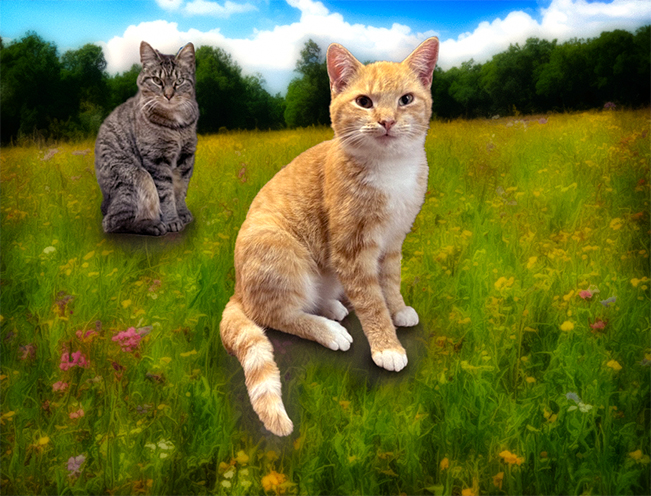We are sharing this globe with other humans. Yes. But. We also share this good place with animals. All sorts of animals.
In my home, for instance, we live with two dogs. Good Ollie. Good Louis. But also in our realm are three cats. Mr. Pepper Jack. Franco Valducci. And Buddy.
Beyond them are countless deer, opossums, squirrels, rabbits, groundhogs, mice, moles, foxes, birds, and on and on. Every single one of them with their own little lives.
So. How and what do they think?
Anyone who shares a living space with an animal knows without a doubt that animals are intelligent. They are thinkers. And more than anything, they express themselves.
This is clearly apparent to my friends with cats.
And today, I’m here to tell you this. If you’ve ever wondered if your feline friends’ furry faces are saying something? Well, yes. They were.
Here is the deal. In a study published in the journal Behavioural Processes last month, two US scientists counted 276 different facial expressions when domesticated cats interacted with one another.
This study showed us that cat communication is more complex than previously assumed. They found that the domestication of cats has had a significant impact on the development of facial signaling.
One of the researchers explained that “domesticated cats are typically more socially tolerant than their wildcat counterparts because of the way they live in proximity to humans.” So in this way, the researchers were expecting to see expression in both positive and negative contexts. But they were totally surprised to “observe 276 morphologically distinct facial expressions.”
Then, the researchers took it a step further. They “measured” the differences in the cats’ expressions. With that, they concocted a “coding system” that they called “the Cat Facial Action Coding System.” Catchy? Huh?
By looking at the facial muscle movements, they decided what was what in “cat thinking.” While they were not able to attribute a meaning to each expression they recorded, the researchers found that 45.7% of coded expressions were friendly, while 37% were aggressive.
I don’t know why this cracks me up. But that only accounts for about 83%. That extra 17% is the big “F You” if you ask me. Indifference.
Regardless. All of this just goes to show us. The animals in our world are thinkers. They are filled with emotion, too. I’ve seen it a million times before when my dog goes crazy with joy when I come back home. Or when the squirrel in the backyard hoists the nut over his head in jubilation. Or when the cat looks at you defiantly and pushes the glass vase off the table anyhow.
“”””””””””””””
“All the animals we know have one point in common with us; that is, the desire to make the most of the life they have.” – Bertrand Russell
“”””””””””””””
“The animals of the world exist for their own reasons. We must not be tyrants over the wild world, but fellow citizens with everything that breathes.” – Henry Beston
“”””””””””””””
“Animals are like good people – only better.” – John Steinbeck
“”””””””””””””
It is written all over their cat faces. Read ’em and weep.
